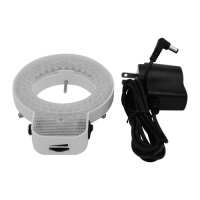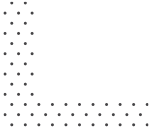
Quick OverviewLED Light. Ring I.D. Size:
Dia. 61mm. LED Quantity: 64. Light Adjustable. Output Power: 4W. Input Voltage: AC 100-240V 50/60Hz. Output Voltage: DC 12V. Power Cord Connector Type: USA 2 Pins. ML23241122 LED Ring Light (4W ID61mm 64Bulbs) Ring LightLight Source TypeLED LightRing I.D. Size Dia. 61mmLED Quantity64Power Supply AdjustableLight AdjustableLight Source Illuminance16000Lux or moreBulb Color Temperature6400KOutput Power4WInput VoltageAC 100-240V 50/60HzOutput VoltageDC 12VPower Cord Connector TypeUSA 2 PinsPower Cable Length1.8mMaterialPlasticColorWhiteNet Weight0.15kg (0.33lbs)Screw ModelM3x24mm
.tb_part
{
width: 100%;
border: solid 0px #ccc;
font-size:12px;
}
.tb_part tr
{
height: 30px;
line-height: 30px;
}
.tb_part td
{
white-space: nowrap;
}
.tb_part_1 td
{
white-space: wrap;
}
.normal{
border-left:solid 2px black;
border-right:solid 2px black;
}
.tb_part tr.normal td
{
border:solid 1px #ccc;
padding-right:5px;
}
.tb_part tr.normal:nth-child(2){
border-top:solid 2px black;
}
.tb_part tr.normal:first-child{
border:none;
}
.tb_part tr.normal:first-child td{
border:none;
font-weight:bold;
font-size:16px;
}
.end-border{
border-bottom:solid 2px black;
}
.tb_part tr.memo,.tb_part tr.memo td{
border:none;
}
Technical InfoInstructionsIlluminatorClose ΛThe conditions of different illumination of the microscope are a very important parameter. Choosing the correct illumination method can improve the resolution and contrast of the image, which is very important for observing the imaging of different objects.
The wavelength of the light source is the most important factor affecting the resolution of the microscope. The wavelength of the light source must be smaller than the distance between the two points to be observed in order to be distinguished by the human eye. The resolution of the microscope is inversely proportional to the wavelength of the light source. Within the range of the visible light, the violet wavelength is the shortest, providing also the highest resolution. The wavelength of visible light is between 380~780nm, the maximum multiple of optical magnification is 1000-2000X, and the limit resolution of optical microscope is about 200nms. In order to be able to observe a much smaller object and increase the resolution of the microscope, it is necessary to use light having a much shorter wavelength as the light source. The most commonly used technical parameters for describing illumination are luminescence intensity and color temperature. Luminescence intensity, with lumen as unit, is the physical unit of luminous flux. The more lumens, the stronger the illumination. Color temperature, with K (Kelvin) as unit, is a unit of measure indicating the color component of the light. The color temperature of red is the lowest, then orange, yellow, white, and blue, all gradually increased, with the color temperature of blue being the highest. The light color of the incandescent lamp is warm white, its color temperature is 2700K, the color temperature of the halogen lamp is about 3000K, and the color temperature of the daylight fluorescent lamp is 6000K.
A complex and complete lighting system can include a light source, a lampshade or lamp compartment, a condenser lens, a diaphragm, a variety of wavelength filters, a heat sink cooling system, a power supply, and a dimming device etc. Select and use different parts as needed. Of which, selection and use of the illuminating light source is the most important part of the microscope illumination system, as and other components are designed around the illuminating wavelength curve and characteristics of the illuminating light source.
Some of the microscope light sources are pre-installed on the body or frame of the microscope, and some are independent. There are many types and shapes of light sources. Depending on the requirements of the microscope and the object to be observed, one type or multiple types of illumination at the same time can be selected. In addition, the whole beam and band adjustment of the light source, the position and illumination angle of the light source, and the intensity and brightness of the light all have a great influence on the imaging. For microscope imaging, a good lighting system may be a system that allows for more freedom of adjustment. In actual work, such as industry, too many adjustment mechanisms may affect the efficiency of use, therefore choose the appropriated configured lighting conditions is very important. Ring LightClose ΛRing light is a kind of "shadowless lamp", which is illuminated from a 360-degree annular angle, and can observe the change of the edge and height of the object to be observed. It is very suitable for surface illumination of non-reflective objects, and is often used to observe and detect the edge of objects, surface structure, traces, etc. such as components on the printed circuit board, liquid crystal glass substrates, metal and non-metal surface dust, scratch damage, various kinds of particles, etc., and is also the most common way of illumination for stereo microscopes.
Circular fluorescent light bulb is a bulb of peripheral illumination with no direction, it requires a reflective bowl to converge the light beam onto the illuminated object below the microscope. The diameter of the tube and the design of the reflective bowl determine the distance and position of the beam convergence point. The LED ring light consists of different LED bulbs. By setting the angle of the bulb, all the illumination beams are concentrated at one focus, and the annular or loop fiber is mostly designed by the incident angle of the fiber exit port.
The central concentration range of the ring lamp usually needs to coincide with the focal length of the objective lens of the stereo microscope. The working distance of the 1X objective lens of stereo microscope is generally about 80-100mm, which is the focus convergence position of most of the ring lamps. Because the external light source itself has a certain height, therefore the concentration center range of the ring light source is generally between 45-65mm. If below 45mm, shadow starts to appear in the middle; if higher than 65mm, the light in the middle will gradually diverge, and the brightness will decrease. When a small objective lens (such as 0.75X/0.5X) is selected, the lighting effect can basically be achieved; but when an objective lens with larger magnification is used and the working distance is relatively small (for example, 2X), the illumination center of the ring lamp will be a "black center", the effect of lighting will be relatively poor.
Ring lights are usually stuck at the bottom of the nosepiece. Tighten the screws. In general, the electrical wires should be pulled to the back of the operating position, the switch or button should be placed on the side for easy operation. Generally, the ring light needs to be stuck with a lens frame at the bottom of the nosepiece. On the objective frame, there is a card slot for screw fastening. There are also microscope nosepieces that contains a card slot position of its own, and does not need an objective frame. Light AdjustableClose ΛThe brightness of the light source adjustable is very important in the imaging of the microscope. Since the difference of the numerical aperture of the objective lens of high magnification and low magnification is very big, more incident light is needed to achieve a much better resolution when using a high magnification objective lens. Therefore, when observing through a high magnification objective lens, the brightness required is high; when observing through a low magnification objective lens, the brightness required is low. When observing different objects, or feature points of the same object at different positions, the brightness needs are also different; including the difference of background light or reflection within the field of view of observation, it has a great influence on the effect of observing the object, and therefore one needs to adjust the brightness of the light source according to each object to be observed. In the light source capable of providing continuous spectrum, such as a halogen lamp, the brightness adjustment of the light not only adjusts the brightness and intensity of the light, but also changes the spectrum emitted by the light source. When the light source is dark, there are many components of red light, and when the brightness is high, there are more blue spectrum. If the required light is strong and the spectrum needs to be changed, the light can be kept at a brighter intensity, which is solved by adjusting the spectrum by adding a color filter.
Take note of the dimming button on the light source, after the On/Off switch is turned on, normally clockwise is to brighten, and counterclockwise is to darken.
If it is adjusted to the lowest brightness, the light source should normally be lit. If the naked eye still can't see the object being illuminated brightly, you need to adjust the brightness knob to a much bigger position. Generally, there is scale marking on the dimming knob, which is an imaginary number representing the percentage of brightness, or an electronic digital display, giving the brightness of the light source under the same conditions a marking. PackagingClose ΛAfter unpacking, carefully inspect the various random accessories and parts in the package to avoid omissions. In order to save space and ensure safety of components, some components will be placed outside the inner packaging box, so be careful of their inspection. For special packaging, it is generally after opening the box, all packaging boxes, protective foam, plastic bags should be kept for a period of time. If there is a problem during the return period, you can return or exchange the original. After the return period (usually 10-30 days, according to the manufacturer’s Instruction of Terms of Service), these packaging boxes may be disposed of if there is no problem.
About Boli Optics:
Boli Optics Microscope Supplier sells professional microscopes, microscope accessories, and magnifying lamps. We offer parts and accessories compatible with Leica, Olympus, Nikon, and Zeiss, and more. We supply research laboratories, medical centers, universities, industrial manufactures, factories, and more. Our engineers and technicians provide technical support and design & manufacture custom microscope products for your applications. Our products are manufactured under ISO 9001 quality control standards. We also provide OEM service. Since 1994, our talented team has been working in the optics industry and serving our customers whole-heartedly. Based in Southern California, we offer fast, same day shipping from our local warehouses.
Visit Product PageEmail:
sales@bolioptics.com
Location:
8762 Lanyard Court,
Rancho Cucamonga
California
91730


